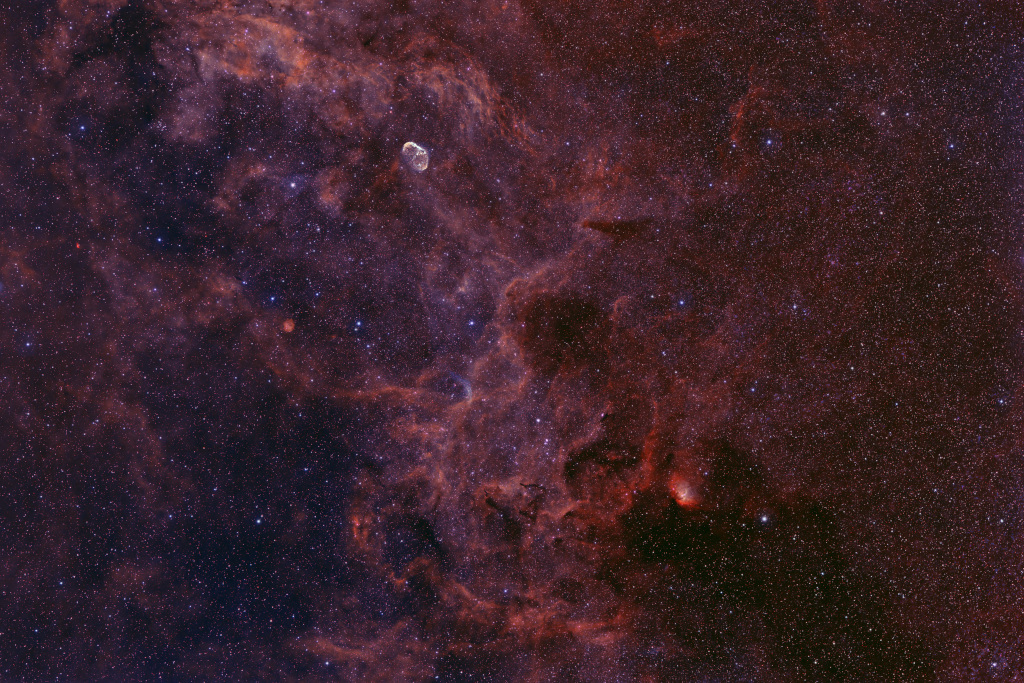天鹅座的宇宙云
(原标题: Cosmic Clouds in Cygnus)
2022-06-09
浏览次数: 369
这些由气体和尘埃组成的宇宙云沿着我们银河系的平面穿过丰富的恒星场,向高耸的天鹅座飞去。它们太微弱了,即使在晴朗漆黑的夜晚,肉眼也看不见。使用窄带滤光片的相机和长焦镜头的图像数据构建了这个10度的宽视场。这幅深马赛克图揭示了一个区域,其中包括恒星形成的尘埃云,在氢原子和氧原子特有的辉光下,可以看到它的轮廓。NGC 6888是靠近顶部的突出的发射星云。它被一颗巨大的沃尔夫-拉叶星吹来的风吹来,直径约25光年,被称为新月星云。画面中央下方的一个微弱的蓝色卷曲也是沃尔夫-拉叶星的特征。这两颗恒星都以惊人的速度燃烧着燃料,在它们的生命即将结束时,最终会在一场壮观的超新星爆炸中爆炸。在图片的右侧,一颗巨大的年轻O型恒星为郁金香星云Sh2-101的光芒提供了动力。
查看原文解释
These cosmic clouds of gas and dust drift through rich star fields along the plane of our Milky Way Galaxy toward the high flying constellation Cygnus. They're too faint to be seen with the unaided eye though, even on a clear, dark night. Image data from a camera and telephoto lens using narrowband filters was used to construct this 10 degree wide field of view. The deep mosaic reveals a region that includes star forming dust clouds seen in silhouette against the characteristic glow of atomic hydrogen and oxygen gas. NGC 6888 is the standout emission nebula near the top. Blown by winds from a massive Wolf-Rayet star it's about 25 light-years across and known as the Crescent Nebula. A faint bluish curl just below center in the frame is also the signature of a Wolf-Rayet star. Burning fuel at a prodigious rate and near the end of their stellar lives, both stars will ultimately go out with a bang in a spectacular supernova explosion. Toward the right, a massive, young O type star powers the glow of Sh2-101, the Tulip Nebula.
© Wolfgang Zimmermann
